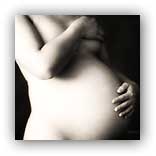|
A widely used class of industrial chemicals linked
with cancer and interference with immune function—perfluorinated
alkylate substances, or PFASs—appears to build up in
infants by 20%–30% for each month they’re breastfed,
according to a new study co-authored by experts from
Harvard T.H. Chan School of Public Health. It is the
first study to show the extent to which PFASs are
transferred to babies through breast milk, and to
quantify their levels over time.
“We knew that small amounts of PFAS can occur in
breast milk, but our serial blood analyses now show
a buildup in the infants, the longer they are
breastfed,” said Philippe Grandjean, adjunct
professor of environmental health at Harvard Chan
School.

The study appeared online August 20, 2015 in
Environmental Science & Technology. Other study
authors were from Danish universities and the
Faroese Hospital System.
PFASs are used to make products resistant to water,
grease, and stains. They’ve been in use for more
than 60 years in products such as stain-proof
textiles, waterproof clothing, some food packaging,
paints, and lubricants, and are known to contaminate
drinking water in the U.S. near various production
facilities. These compounds—which tend to
bioaccumulate in food chains and can persist for a
long time in the body—are found regularly in the
blood of animals and humans worldwide, and have been
linked with reproductive toxicity, endocrine
disruption, and immune system dysfunction.
The researchers followed 81 children who were born
in the Faroe Islands between 1997–2000, looking at
levels of five types of PFASs in their blood at
birth and ages 11 months, 18 months, and 5 years.
They also looked at PFAS levels in mothers of the
children at week 32 of pregnancy.
They found that, in children who were exclusively
breastfed, PFAS concentrations in the blood
increased by roughly 20%–30% each month, with lower
increases among children who were partially
breastfed. In some cases, by the end of
breastfeeding, children’s serum concentration levels
of PFASs exceeded that of their mothers’.
One type of PFAS—perfluorohexanesulfonate—did not
increase with breastfeeding. After breastfeeding was
stopped, concentrations of all of five types of
PFASs decreased.
The results suggest that breast milk is a major
source of PFAS exposure during infancy.
“There is no reason to discourage breastfeeding,
but we are concerned that these pollutants are
transferred to the next generation at a very
vulnerable age. Unfortunately, the current U.S.
legislation does not require any testing of chemical
substances like PFASs for their transfer to babies
and any related adverse effects,” Grandjean said.
Funding for the study came from the National
Institute of Environmental Health Sciences, NIH
(ES012199); the U.S. Environmental Protection Agency
(R830758); the Danish Council for Strategic Research
(09-063094); and the Danish Environmental Protection
Agency as part of the environmental support program
DANCEA (Danish Cooperation for Environment in the
Arctic).
See also:
Environmental contaminants can cause lower sperm
count
For more information
“Breastfeeding as an Exposure Pathway for
Perfluorinated Alkylates,” Ulla B. Mogensen,
Philippe Grandjean, Flemming Nielsen, Pal Weihe, and
Esben Budtz-Jřrgensen, Environmental Science &
Technology, August 20, 2015,
doi: 10.1021/acs.est.5b02237
Alternatives to PFASs: Perspectives on the Science
http://ehp.niehs.nih.gov/1509944/
Harvard T.H. Chan School of Public Health
MDN |